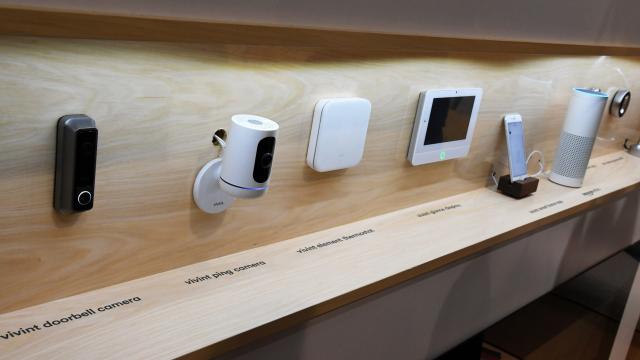The rising popularity of smart home technology has given rise to something dangerous: Internet-connected abuse.
Photo: Getty
A new report from The New York Times reveals a disturbing trend in which smart home technology is being used as a tool for domestic abuse. While it isn’t a revelation that connected devices can be exploited by bad actors, the inflamed use of this tech as a vehicle for psychological warfare and surveillance in abusive relationships is deeply unsettling.
According to the Times report published on Saturday, domestic abusers are using the likes of internet-connected thermostats, doorbells, speakers, lights and other smart home devices to establish their power or harass their partners.
One woman alleged that her air conditioning turned off without her controlling it, another woman alleged her front door lock code frequently changed, and another alleged that her doorbell repeatedly rang when no one was there. One woman told the Times that she resorted to pulling her smart thermostat out of the wall.
People working at abuse helplines told the Times that they saw an increase in calls over the last year regarding people who didn’t have control over their smart homes.
“Callers have said the abusers were monitoring and controlling them remotely through the smart home appliances and the smart home system,” Muneerah Budhwani, an advocate at the National Domestic Violence Hotline, told the Times.
“People have started to raise their hands in trainings and ask what to do about this,” Erica Olsen, director of the Safety Net Project at the National Network to End Domestic Violence, told the Times. She reportedly characterised the abuse of smart home tech as “prevalent”.
The past few years have seen a rapid increase in connected homes in the United States, jumping from 17 million in 2015 to 29 million last year, according to a report by McKinsey. Smart homes are forecasted to be a $US27 billion ($36 billion) market by 2021. Research firm Telsyte estimates that the average Australian household has 17.1 internet-connected devices, and expects that number to grow to 37 by 2022.
Technology has, of course, perpetuated surveillance and abuse for years. NPR surveyed over 70 domestic violence shelters in the US in 2014 and found that 85 per cent of them reported working with victims who were tracked through GPS, and 75 per cent reported victims whose abusers spied on them using mobile apps.
A 2015 Australian study from the Domestic Violence Resource Centre Victoria found that 98 per cent of respondents “stated that they had clients who had experienced technology-facilitated stalking and abuse”.
What’s unique and particularly troubling about the issues explored in the Times report is how the proliferation of emerging tech and product design can directly contribute to violence against women. It has become incredibly cheap and easy to turn a home into a smartphone-controlled surveillance machine, and for many of these connected devices, abusers simply need access to an app to exert their control over their victims.
What’s clear is the male-dominated industry might not have predicted how their creations could be weaponised by domestic abusers. It’s a common and dangerous consequence of Silicon Valley’s “move fast and break things” ethos, one that oftentimes fails to neglect how its creations will impact the most vulnerable populations.
